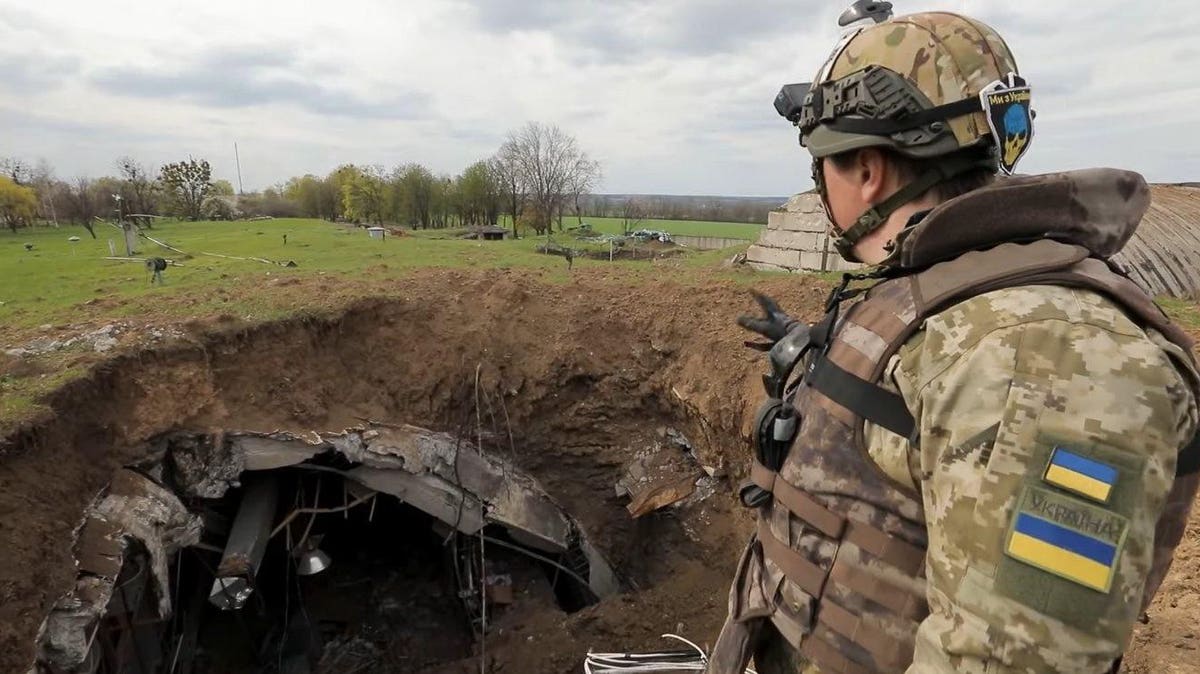The bombardment that began Russia’s wider war on Ukraine in the early morning hours of Feb. 24, 2022 was ineffective. Ukrainian brigades had repositioned from their garrisons into the forests. Ukrainian warplanes dispersed to small airstrips and roadways.
When the Russian rockets and missiles struck Ukrainian bases, they destroyed very little of value.
Mostly. There was one exception. At 5:15 A.M. on Feb. 24, 2022, a Russian Kalibr cruise missile plunged into a grassy lawn at a Ukrainian base in Kharkiv—and blew up the city’s underground air-defense command post.
Lying just 25 miles from the border with Russia, Kharkiv was Ukraine’s most vulnerable city. As a prelude to assaulting the city, the Russians first targeted its air-defenses.
They started by aiming that Kalibr—the missile that started the war—at the Kharkiv air-defense command bunker, which lay under the lawn beneath yards of soil.
The two-ton, radar-guided Kalibr didn’t miss. It buried itself in the soil—and exploded directly atop the bunker. The ceiling collapsed, and five men died.
The missile that started the war is one subject of Dmytro Komarov’s new documentary about the Ukrainians’ successful defense of Kharkiv in the winter and spring of 2022. Not only did Kharkiv not fall, it was the springboard for a Ukrainian counteroffensive that ejected Russian forces from the surrounding oblast in the fall of 2022.
But those early hours were dire. Russian missiles and rockets destroyed 90 percent of Kharkiv’s air-defenses—including the underground command bunker and batteries of S-300 long-range surface-to-air missiles.
The strikes were unusually precise, by Russian standards. “It was necessary to perfectly know, perfectly calculate,” a veteran of Kharkiv’s defense told Komarov.
The veteran has a theory about the strike on the bunker. “They knew exactly where the regiment command post was,” he said. “The building was built during the former Soviet Union times. Russia had the planes and a layout; it was somewhere in the archives in Moscow.”
The same could be said of many of Ukraine’s military installations. It’s telling that the bulk of Ukraine’s forces escaped harm that first night of bombardment by not being where the Russians expected they’d be: at their ex-Soviet bases.
The Kharkiv air-defense coordinators—those who survived the Kalibr strike—learned the hard way that dispersal is life. It was a lesson the whole Ukrainian air-defense corps quickly internalized, according to Justin Bronk, Nick Reynolds and Jack Watling, analysts for the Royal United Services Institute in London.
“From early March, the [Russian air force] lost the ability to operate in Ukrainian-controlled air space except at very low altitudes due to its inability to reliably suppress or destroy increasingly effective, well-dispersed and mobile Ukrainian surface-to-air missile systems,” Bronk, Reynolds and Watling wrote.
Read the full article here





